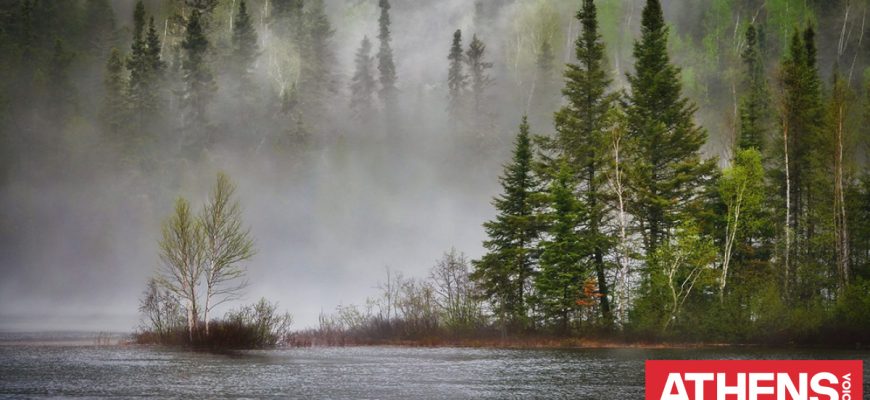To deal with climate change we must immediately take into account the factor of biodiversity loss
Ecosystem response is more flexible and dynamic in resilient and healthy ones than in degraded ones. The effects of human activities and climate change are evident at all levels, from individual species to entire ecosystems. Key degradation factors are intensive agriculture, deforestation and urbanization. A warming atmosphere is causing alien species of fauna and flora to invade areas where they shouldn’t be, as well as disease outbreaks that spread faster and with greater intensity. In addition, due to the accelerated increase in average temperature and consequent changes in the environment, many endemic species are not able to adapt as quickly as necessary, resulting in their inevitable extinction.
Climate change can affect ecosystems in a scaled and sweeping manner. For example, changes in mountain ecosystems, such as a change in the amount and type of rainfall – thus the quantity and quality of water – also indirectly affect lower areas, affecting water runoff and forcing animals and plants to relocate or even leading to complete extinction species. In more sensitive ecosystems the effects are more serious, as species depend on specific environmental characteristics.
In the EU, long-term trends show a severe decline in biodiversity. Three-quarters of the habitats examined and 39% of 463 bird species are in poor condition. The trend of bird population decline is steadily increasing, and according to experts, serious efforts should be made to reverse it.
In terms of biodiversity, forests are among the richest ecosystems on the planet, and they also play an important role in mitigating the effects of climate change. Large rainforests, such as the Amazon, the Congo River Valley Forest and the rainforests of Southeast Asia, play a critical role in storing carbon dioxide.
Along with these, sustainably managed forests can make a significant contribution to climate protection, because they act as natural air filters, absorbing pollutants and other harmful particles. They protect water and soil and have beneficial functions, such as protecting against landslides and erosion, improving water quality, retaining water during heavy rainfall and reducing surface runoff. Forests are also manifold beneficial to humans by providing recreational areas and contributing to physical and mental health.
Degraded forest ecosystems take longer to restore, so their economic value decreases as they provide fewer ecological services. They are less durable and more easily affected by extreme weather events, losing some of their ability to protect and restore.
Given the importance of forests as key pillars for preventing climate change in Europe, their conservation and restoration should be a priority when discussing climate. In the EU, around 10% of annual greenhouse gas emissions are absorbed and stored in soil and forest biomass. Mature, old-growth forests have an additional valuable role, because the large amounts of living and dead biomass and soil they host absorb large amounts of CO2. Recent surveys have shown that such forests represent less than 3% of the EU’s total forests – around 90% of which are in Sweden, Bulgaria, Finland and Romania.
In contrast to the latter, overexploited and heavily interfered forests are less resilient, therefore more vulnerable to the effects of climate change due to instability of the entire ecosystem. Deforestation caused mainly by agriculture and urbanization in the EU contributes to increasing greenhouse gas emissions and results in habitat loss, as well as significant changes in populations and species diversity.
Overexploitation and climate change affect forests in a more indirect way, affecting their life cycle and feeding, destroying soil composition, available natural resources, plant growth processes and species populations. By affecting temperature and humidity, climate change also affects the water cycle – locally as well as globally – by increasing the frequency of extreme events, such as drought and wildfires, and reducing the resilience of forests to natural factors, such as the invasion of alien species , diseases and epidemics, such as the wood-eating beetle.
Biodiversity protection is extremely important for preventing and reducing the effects of climate change, as well as for species adaptation. Measures to protect nature and deal with climate change are completely connected. The knowledge we have today is enough to start implementing sustainable nature-based measures, and to adapt our practices to deal with climate change in a more biodiversity-oriented way. Unfortunately, some well-intentioned measures can harm biodiversity and threaten ecosystems.
A typical example is the use of wood. Although wood is considered a renewable fuel, continuous logging of mature, old-growth forests destroys the resilience of forest ecosystems and can lead to significant degradation. In Romania, for example, illegal logging in the Fagaras Mountains continues, destroying one of the oldest forest ecosystems in the Balkans. To consider wood as a renewable energy source with a neutral carbon footprint we need to carefully consider it in terms of long-term sustainability, since its poor management can escalate the effects of climate change on forest ecosystems.
There are several ways to address both biodiversity loss and climate change, including forest protection and restoration. New, large areas should be designated where they will not be exploited, allowing forests to mature and reach their full potential as carbon sinks. At the same time, sustainable management with methods such as soft logging and the promotion of recognized sustainable by-products can contribute to maintaining the social, ecological and economic value of the forest. Additional restoration measures such as reforestation and new plantings will contribute to sustainable forestry and biodiversity protection at a local or even regional level.
The EU is currently tackling biodiversity loss in two ways: the European Forest Strategy 2030 and the Biodiversity Strategy 2030. To be recognized at all levels – from governance to the general public – the positive relationship between in nature conservation, climate change and natural solutions a bold promotion of biodiversity conservation efforts is needed. A new legislation – a nature restoration law – would make a decisive contribution to the sustainable management of natural resources, while protecting not only nature but also people.
See more articles about climate change at www.clima21.gr








